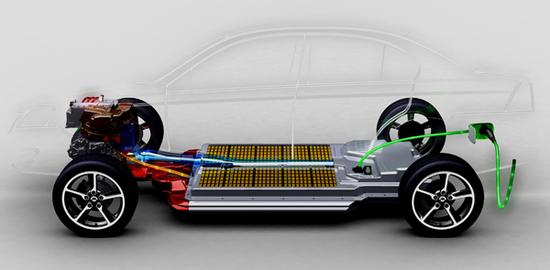Abstract With the rapid development of the electric vehicle market, shorter charging time and longer cruising range have challenged the power battery. In terms of cruising range, devices with high energy storage capacity are needed, and power density and energy density are undoubtedly two weight factors. Super capacitors in energy storage...
With the rapid development of the electric vehicle market, shorter charging time and longer cruising range pose challenges to the power battery. In terms of cruising range, devices with high energy storage capacity are needed, and power density and energy density are undoubtedly two weight factors. Supercapacitors have their own advantages in energy storage.
However, today's supercapacitors have a disadvantage: the BOPP diaphragm (a bi-directional polymer) used does not work under high temperature conditions, especially for automotive applications, where additional refrigeration equipment is required. This problem also leads to an increase in the weight and manufacturing costs of the car.
Recent research from the University of Pennsylvania has shown that new composites synthesized from high molecular polymers and ceramics may help solve this problem.
Previous research has focused on two-way thin film composites synthesized from nanoceramics and high molecular polymers. Although the composite is resistant to higher operating temperatures and achieves better charge and discharge efficiency, there is also a significant disadvantage: a lower dielectric constant or a tendency to decompose under an applied electric field. This can make the energy density of the battery unacceptably low.
Currently, researchers at the University of Pennsylvania are developing a sandwich composite called SSN-x that can be used not only at high temperatures but also with a high dielectric constant, and the researchers published their findings in 8 On the 22nd of the Proceedings of the National Academy of Sciences.
Boron nitride nanosheets (blue and white atoms) act as insulators to protect the lanthanum nitrate (green and purple atoms) in the middle layer in high temperature energy storage
The outer layer of the SSN-X interlayer is a material synthesized from boron nitride nanosheets on a c-BCB polymer matrix. The outer layer of this composite acts as an insulator, preventing charging from the electrodes of the capacitor device. Due to the nature of the outer layer material, scientists have focused on adjusting the central layer material formulation synthesized by barium titanate nanoparticles and c-BCB to have a high dielectric constant for the center layer material. The adjustment of the sandwich structure and the central layer formulation greatly increases the energy density and power density of the SSN-X sandwich composite.
Wang Qing, a materials scientist and principal researcher at Pennsylvania State University, said, “In the past, people focused on two-way film materials and changed the material properties by adjusting their material composition. Now we look at the three-way structure, which is for us. There is more room to adjust material composition and optimize material properties."
In the experiment, the researchers found that the SSN-x composite can work at 150 ° C (this experimental temperature is enough to withstand the test of the working temperature of electric vehicles). In the experiment, SSN-x composites withstood 24 Hours, and as many as 30,000 consecutive charge and discharge tests, there was no evidence of deterioration of charge and discharge. At high temperature, the performance of SSN-X composites is far superior to the most advanced high-analytical polymers in terms of energy density, power density, charge and discharge efficiency, and charge and discharge times before material decomposition.
“At the moment, we hope that this material can be mass-produced at an economical cost,” says Wang Qing, who also wants to work with electrical engineering and systems engineers to explore ways to effectively integrate this material into hybrid and pure electric vehicles. ".




